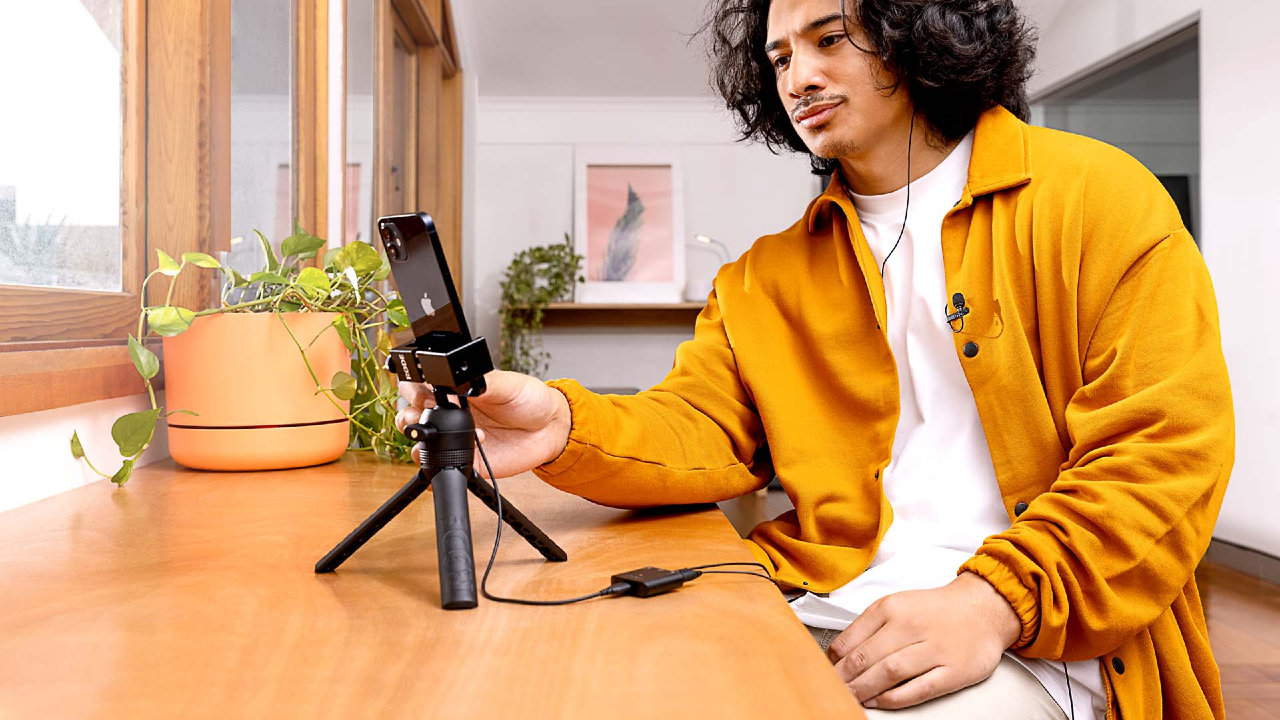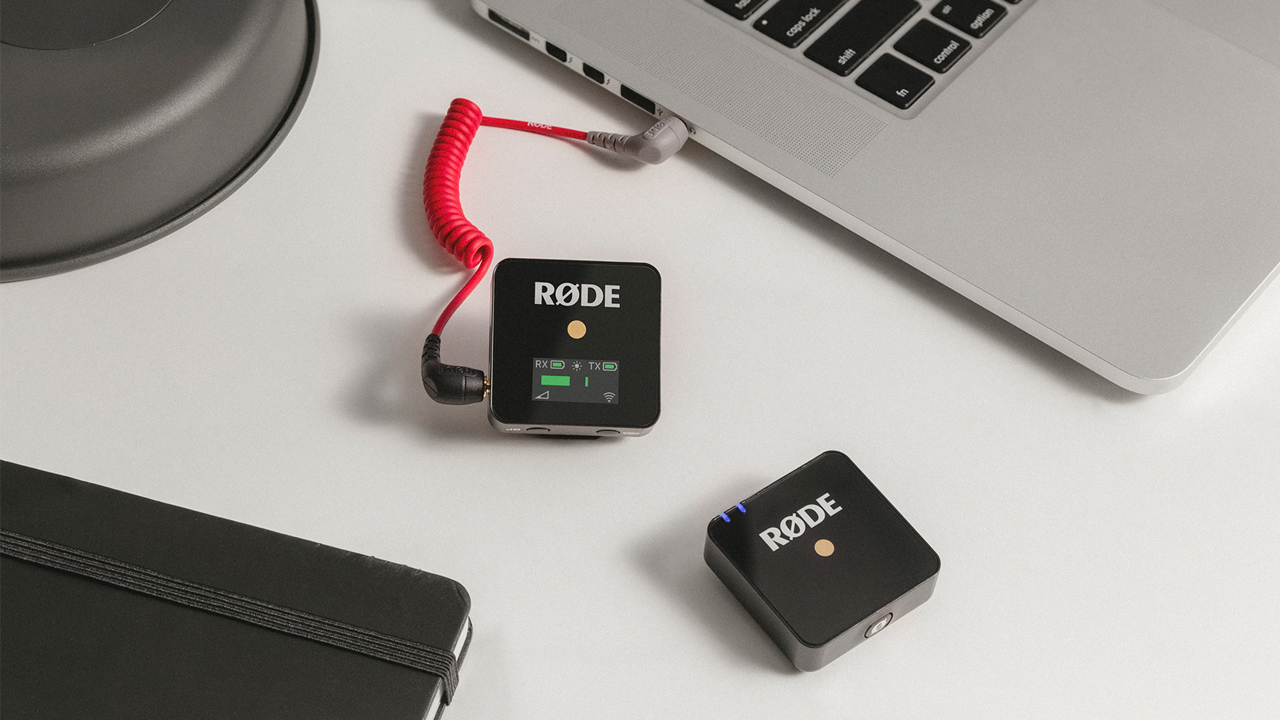A Guide To Using VideoMics, Wireless and Lavalier Mics With Computer or Mobile Device
One of the most common queries we get at RØDE is how to connect microphones with a 3.5mm output to computers and mobile devices. It seems like a simple matter, but it can be surprisingly tricky without the right equipment.
Below we’ll take you through what RØDE mics have a 3.5mm output, the difference between TRS and TRRS connectors, and how to connect these mics to a computer or mobile device.
.jpg)
The AI-Micro in use with the RØDE Reporter App
RØDE Microphones with a 3.5mm Output
Many products in the RØDE range have a 3.5mm output. This includes most of our VideoMics, some of our wireless mics, such as the Wireless GO II and Filmmaker Kit, and lavalier mics like the Lavalier II. These microphones are generally designed to be plugged into cameras, compact audio recorders and consumer devices like smartphones, most of which feature 3.5mm inputs.
When it comes to mics with 3.5mm output jacks, there are two main types you need to be aware of. They look very similar but are wired differently, depending on what kind of device they are designed to primarily be connected to. They are usually called either TRS or TRRS.
Understanding TRS and TRRS
It's really important to be able to identify what kind of output your mic has and what kind of input your device has – TRS/TRRS incompatibility is usually the cause of connection issues!
TRS stands for ‘tip, ring, sleeve’, and is the kind of connector you find on cameras and other audio gear. They are easy to identify as they only have two black rings on the plug. These carry just one signal, so your device (for example, a DSLR camera) may have two of these – one audio input and one audio output (usually intended for headphones).
TRRS stands for ‘tip, ring, ring sleeve’ and is the kind of connector you find on computers and mobile devices. Your regular earbuds for your phone almost definitely have one (unless you have a newer iOS device with a Lightning connector). These have three black (or coloured) rings on the jack and carry two signals – the output for the headphones and also the input from a microphone, such as the mic built into your earbuds.
When it comes to RØDE products, it’s really easy to differentiate between a TRS and TRRS cable – TRS cables have black connectors, TRRS cables have grey connectors. So, if you want a microphone that connects directly into a smartphone or computer, you need one with a grey connector, such as the smartLav+. If you want one that plugs directly into a camera or audio recorder, you need one with a black connector like a VideoMic or Wireless GO II.
If you already have a RØDE mic and it doesn’t have the correct connector for plugging into your device, don’t worry, we have a variety of solutions to suit just about any setup.

The Lavalier II plugged into AI-Micro connected to an iPhone mounted on a Tripod 2
How to Plug Mics With a 3.5mm Output Into a Computer or Mobile Device
The AI-Micro is a seamless solution for connecting a 3.5mm microphone to a computer or smartphone. It is an ultra-compact dual-channel audio interface that features two high-quality inputs for plugging in virtually any 3.5mm microphone, including lavaliers, VideoMics and even stereo microphones (these are auto-sensing inputs that accommodate both TRS and TRRS microphones). It also has a headphone output for crystal-clear audio monitoring and playback.
The AI-Micro is plug-and-play compatible with Mac, Windows, iOS and Android devices and designed to connect seamlessly to smartphones, tablets and computers via its universal USB output. It also comes with high-quality USB-A, USB-C and Lightning cables, meaning all you need to do is plug it in and start recording – no adaptors needed.
The AI-Micro is also compatible with the entire suite of RØDE App, including RØDE Central, Reporter and Connect, giving you access to even advanced features and functionality, on-the-go configuration, and broadcast-quality recording on any device.
An alternative is to use the AI-1 audio interface with a 3.5mm to XLR adaptor such as the VXLR Pro, however, you won’t have access to the handy features from the RØDE app suite or the device configuration like you would with the AI-Micro.
Using Adaptors to Plug a Microphone with a 3.5mm Output into a Computer
If you don't have an AI-Micro, you can use adaptors to connect your microphone to your device, though there are some drawbacks in doing this. More on that shortly.
There are a number of adaptors you can use to plug a microphone with a 3.5mm output into a computer. The first is the SC4, which is a 3.5mm TRS to TRRS adaptor. Simply plug the output of the microphone into the adaptor, then plug the grey connector into your device.
Remember grey = TRRS for computers and mobile devices; black = TRS for cameras and audio recorders.
If you have a mic with a removable cable, like the VideoMic Pro+ or Wireless GO II, you could use the SC7, which is a 3.5mm TRS to TRRS patch cable – this is a neater solution. And if you need some extra cable length to work with, you could also use the SC8 TRS to TRS extension cable and an SC4 together.

RØDE Wireless GO and SC7 cable
Once you’ve connected the mic to your device using the correct cable, you may need to select it as the external microphone input in your audio settings or your recording or streaming software.
However, using adaptors has its drawback and limitations as, unlike the AI-Micro, you won’t be able to monitor your audio output, as well as having limited control over adjustable parameters such as the input gain. You may also run into issues when using an external microphone for two-way conversations on a smartphone, as your device may assume you have connected a pair of headphones.
There’s also the chance that some mobile devices and computers will have issues recognising that an external microphone has been connected, even if you have connected them correctly. This is a hardware limitation that some devices have, as they haven’t really been designed to have an external microphone plugged in this way.
Unfortunately, there isn’t a clear rule as to what mics will work with what devices, as it varies between models and manufacturers, which is why using adapters is a tricky topic. We recommend using the AI-Micro as a foolproof solution.
That’s it! We hope that was helpful in explaining this rather complicated subject. If you have any questions about a specific device you are using or the best audio solution for you, get in touch with our support team and we’ll be happy to help.